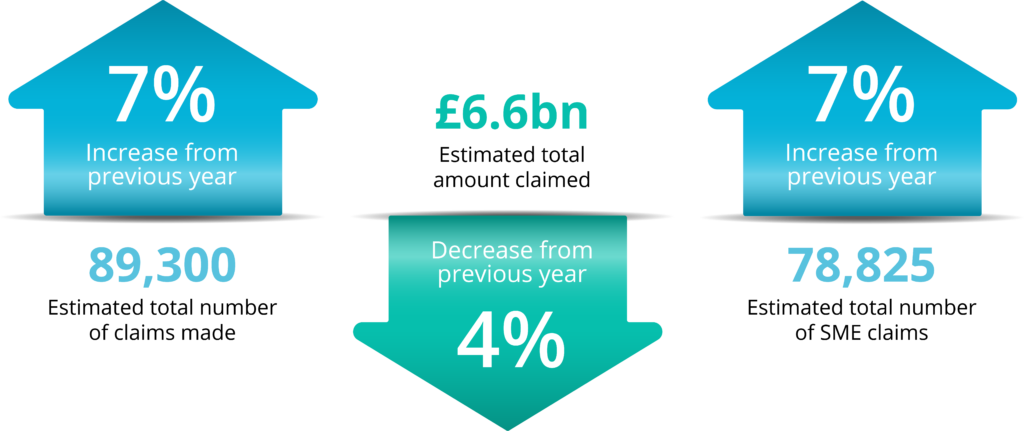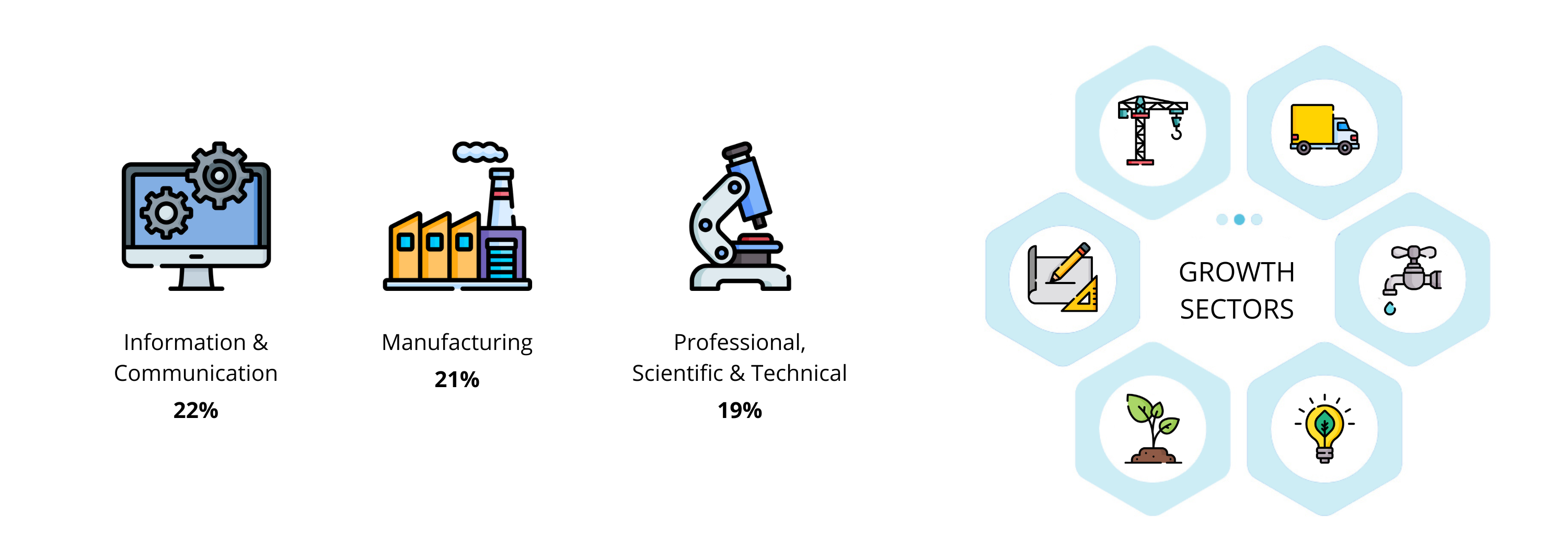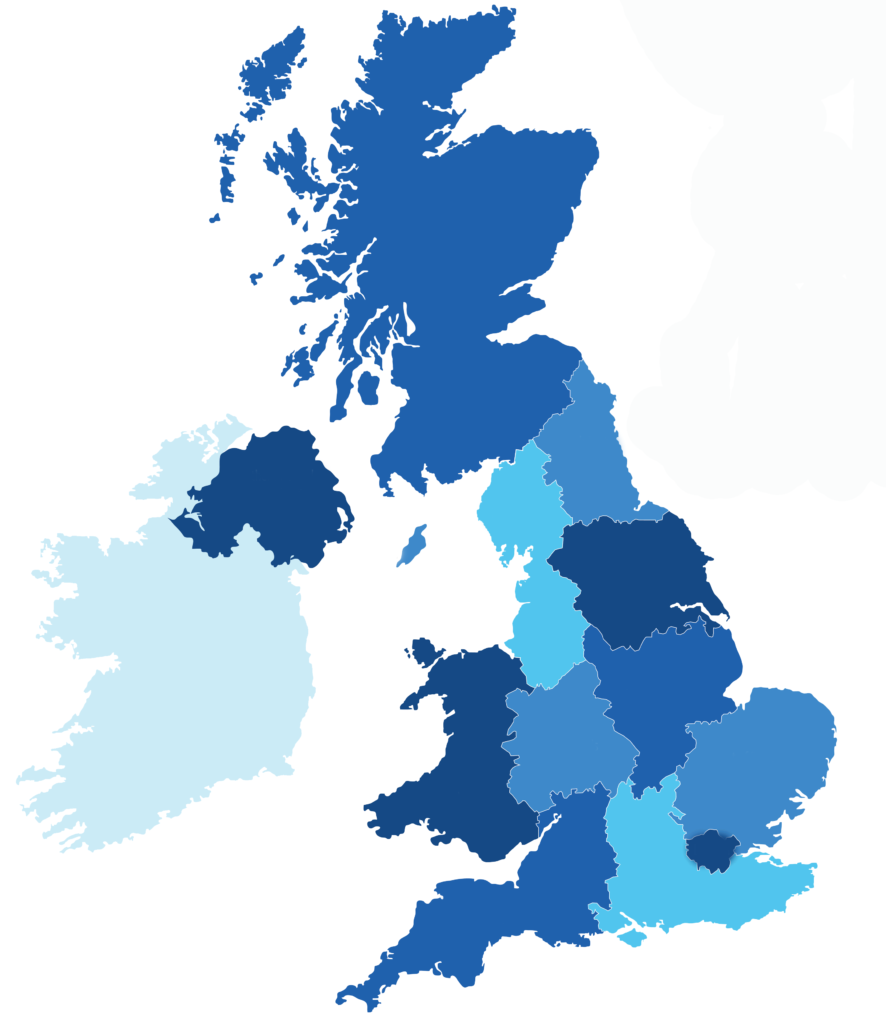2022 HMRC R&D Tax Credit Statistics Released
HM Revenue and Customs (HMRC) have recently released their latest R&D Tax Credits National Statistics Report, providing valuable information about Research and Development (R&D) Tax Credits, their cost, and the nature of the companies claiming them. The report, published each year, covers the accounting period up to the year ending March 2021.
R&D Tax Credit Statistics: Key Findings 2020-2021
1. For the first time since 2000, the value of R&D tax credit claims drop
Headline figures from the report show that for the first time since the scheme was introduced the total value of relief awarded to businesses claiming research and development (R&D) tax credits has fallen. The estimated amount of total R&D tax relief support claimed for the tax year 2020-2021 was £6.6 billion, a decrease of 4% from the previous year. This corresponds to £38.1 billion of R&D expenditure, which is 11% lower than the previous year.
Whilst HMRC give little indication as to the reason for the decrease, the accounting period in question covers the beginning of the COVID-19 pandemic. As such, the decrease could likely be attributed to the impact that the pandemic had on investment in innovation during this time.
On a positive note, the number of businesses claiming R&D tax credits rose again to 89,300, an increase of 7% from the previous year. The increase is primarily driven by a 7% rise in the number of SME claims to 78,825. The figures show, that despite challenging times with the pandemic, innovation continues to be key to the success of UK businesses.

Claims for the tax year 2020-2021 can still be submitted past the cut-off date for the 2022 HMRC statistics publication.
The statistics published here for 2020-21 are therefore provisional and have been uplifted to include estimates for claims not yet received. Revisions are expected in next year’s publication.
2. Three industry sectors continue to dominate
There is once again a concentration in the number of UK claims in the ‘Manufacturing’, ‘Professional, Scientific and Technical’, and ‘Information and Communication’ sectors which account for 62% of the total number of claims and 70% of the total amount claimed in 2020-2021.
As expected these sectors continue to dominate due to R&D being at the heart of what they do. However, of the three sectors only the Information and Communication sector saw an increase in number of claims from the previous year – 20% to 22%. Both the Manufacturing sector and Professional, Scientific and Technical sectors saw a decrease in the number of claims. The data suggests that sectors such as Information and Communication more easily adapted to the changes in working conditions necessitated by the COVID-19 pandemic. This contrasts with the challenges experienced in industries such as scientific, manufacturing and construction including site shutdowns, social distancing and supply chain disruption.
We can also see from the report that despite a dominance from the three sectors, other sectors that are not traditionally associated with R&D activities continue to grow. Agriculture, construction, electricity, water & sewerage and transport & storage have all seen growth in the number of claims submitted from 2019-2020 to 2020-2021.
Number of R&D tax credit Claims by industry sector, 2020-2021

3. RDEC claims dominated by SME’s

The report shows a total of 10,475 Research and Development Expenditure Credit (RDEC) scheme claims for 2020-21, an increase in 7% from the previous year.
Of the 10,475 claims, 3,990 are from large companies and 6,485 are from SMEs claiming under the RDEC scheme because they are undertaking the R&D as subcontractors, or the R&D is subsidised, and so they are unable to claim under the SME scheme.
Perhaps surprisingly, given that the RDEC scheme was introduced as an incentive for ‘large companies’, the driving factor of the overall increase has been a result of more SMEs making claims. SME companies claiming under the RDEC scheme represents a 20% growth. In contrast, there was a 9% decrease from large companies claiming.
The decrease in total R&D expenditure from the previous year is also largely driven by a decrease in expenditure from companies claiming through the RDEC scheme. This could be due to several factors, most obviously the impact of the COVID-19 pandemic.
4. Claims are concentrated in London and the South East of England
R&D claims are once again concentrated in companies with a registered office in London, the South East or the East of England. London and the South East account for 36% of the number of claims and nearly half (49%) of the total amount claimed in 2020-2021.
The East of England has the third largest amount claimed at 12% of the total, but is fourth based on the number of claims just behind the North West. Wales and Northern Ireland have the lowest total number of claims.
The proportions of claims and amount claimed by region are almost identical to those seen in recent years.
However, an important point to note is that the regional split is based on the registered head office location so may not be where all the R&D activity takes place.
How do R&D tax credits differ by region?
Hover over our interactive map to discover the number of claims and total value of claims in your region, and how this compares with the rest of the UK.

Scotland
Number of Claims = 4625
Value of Claims = £295 Million
Northern Ireland
Number of Claims = 2540
Value of Claims = £135 Million
North West
Number of Claims = 9390
Value of Claims = £480 Million
North East
Number of Claims = 2900
Value of Claims = £125 Million
Yorkshire & the Humber
Number of Claims = 6650
Value of Claims = £290 Million
East Midlands
Number of Claims = 6050
Value of Claims = £330 Million
West Midlands
Number of Claims = 7530
Value of Claims = £430 Million
Wales
Number of Claims = 2720
Value of Claims = £130 Million
South West
Number of Claims = 6920
Value of Claims = £330 Million
South East
Number of Claims = 13013
Value of Claims = £1.2 Billion
London
Number of Claims = 18785
Value of Claims = £2.08 Billion
Eastern England
Number of Claims = 8340
Value of Claims = £770 Million
5. First alignment between ONS and HMRC stats
The Office for National Statistics (ONS) publishes several additional National Statistics on R&D in the UK, including the Business Expenditure on Research and Development (BERD) survey. Previous releases have identified discrepancies between HMRC and ONS estimates of R&D expenditure, which has made it hard to compare the two. ONS has historically posted a lower estimate of R&D expenditure compared to HMRC statistics – figures for 2019/20 showed a £16.8 billion difference!!
This year, in an effort to improve cross publication coherence, HMRC and ONS have collaborated to compare the estimates, publishing a joint article describing how to interpret both sources: ONS-HMRC article.
